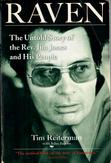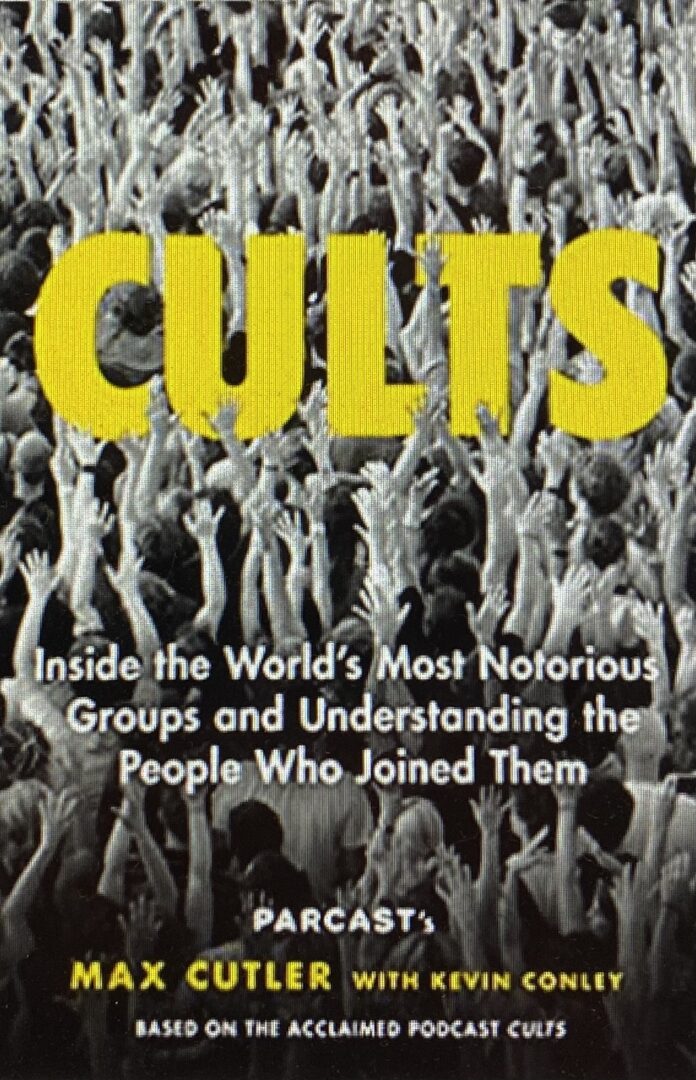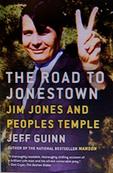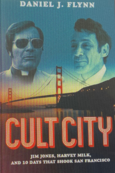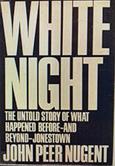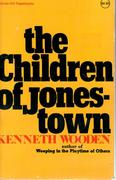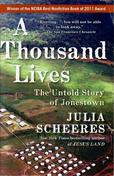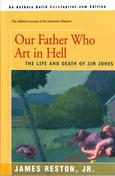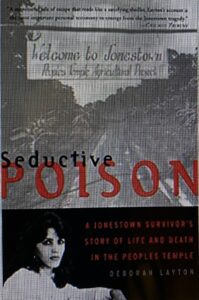Cults
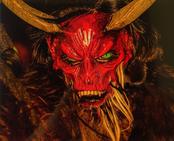
Above: Krampus mask on the wall of the nightclub Lucifer's.
Below: Chicago's former skid row, an area of street preachers, soup kitchens, dive bars, and desperation where some denizens found solace in booze and drugs and others got trapped into cults.
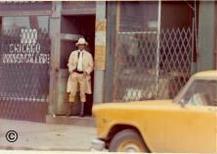
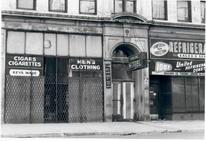
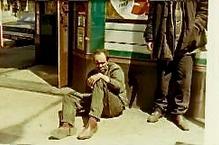
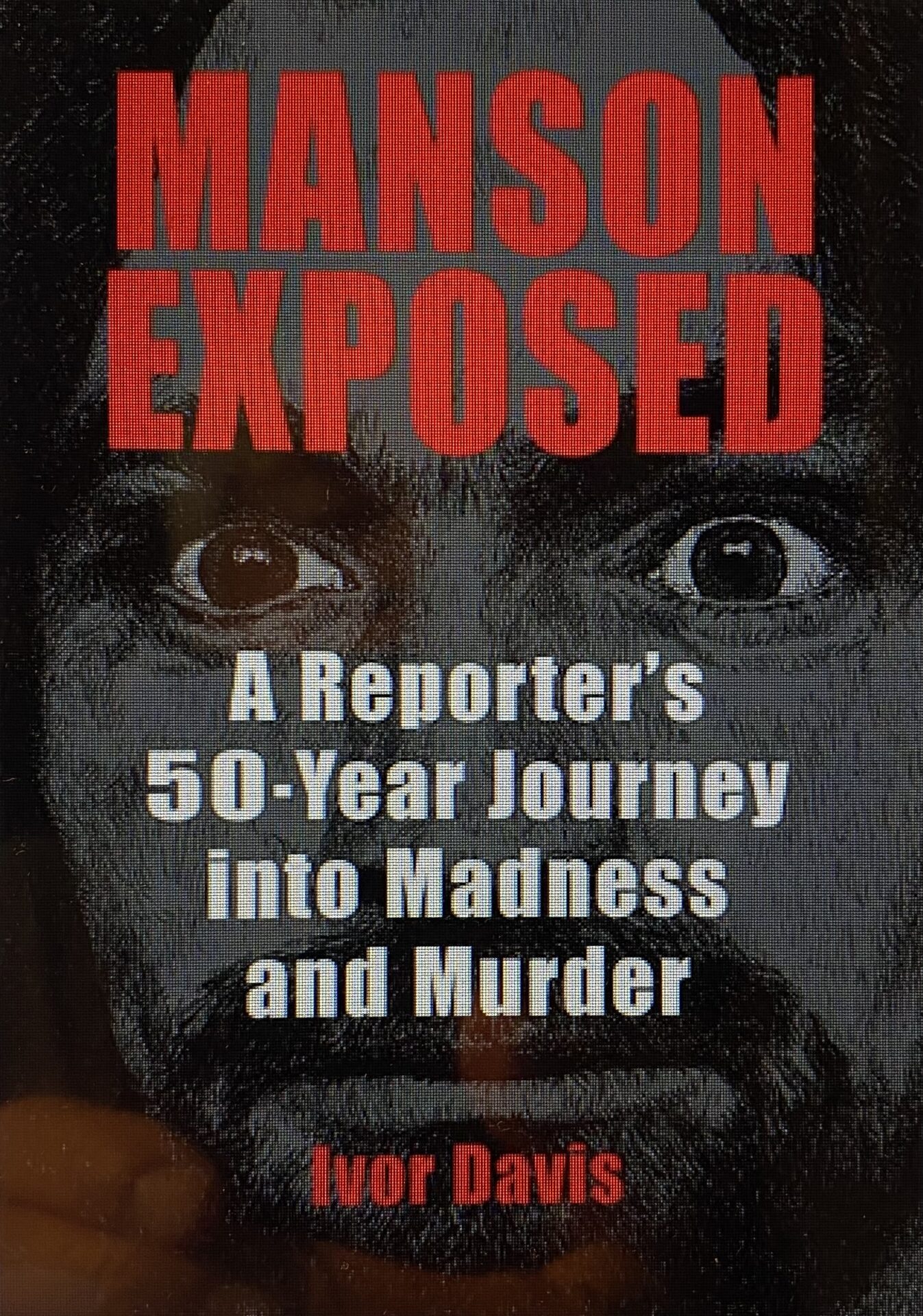
Books About Manson Family
Charles Manson and his followers continue to be a popular subject.
Cease to Exist by Charles "Tex" Watson as told to Chaplain Ray Hoekstra
Helter Skelter by Vincent Bugliosi and Curt Gentry
Manson by Jeff Quinn
Manson Exposed by Ivor Davis
Manson in His Own Words by Charles Manson
Member of the Family by Dianne Lake and Deborah Herman
Taming of the Beast by Edward George with Dary Matera
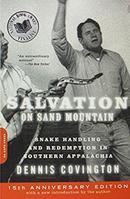
The New York Times reporter, Dennis Covington, converted to snake-handling religion while covering the trial of Rev. Glenn Summerford for attempted murder. He tells of this spiritual journey in Salvation on Sand Mountain, a National Book Award finalist.
Religious groups practicing snake handling during services are sometimes referred to as cults by the media although they are basically a subculture or a borderline cult. In the broadest use of the term, "cult" has been applied to controversial groups with a charismatic leader, such as Extinction Rebellion.
Semi-cults or cult-like groups exist around the globe, often escaping public attention, their focus on numerous issues - reenacting the 1950s, the Second Coming, or self-improvement.
Ascensionism, for example, is labeled a New Age cult by some while others argue that it doesn't meet the criteria. Founded in 2006, it believes in reincarnation. It made news when rumors spread that it uses the role-playing video game Kanye Quest 3030 to recruit members.
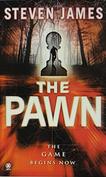
13 Novels About Cults:
Cults appear in many genres.
Before White Night by Joseph Hartman
Children of Paradise by Fred D'Aguiar
The Collective by Alison Gaylin
The Followers by Rebecca Wait
Geek Love by Katherine Dunn
The Girls by Emma Cline
Jonestown by Ryan Roy
Killing Mind by Angela Marsons
The Marriage Pact by Michelle Richmond
The Pawn by Steven James
The Vicious Circle by Katherine St. John
We Can Only Save Ourselves by Alison Wisdom
When Death Draws Near by Carrie Stuart Park
Cults in America
A cult is often defined as a group of people devoted to a charismatic leader who promotes an off-beat or bizarre doctrine and wields extensive control over the private lives of his/her followers. Cults have been part of the American scene since its founding days, the leaders ranging from self-improvement gurus to apocalyptic preachers to terrorists. One source estimated that over 9,000 cults existed in the U.S. in 2020. This number varies, depending on the broadness of the definition - some estimates include groups better labeled as subcultures. For example, Preparing A People - which made news because of the notoriety of member Lori Vallow (aka Cult Mom, convicted of the murder of her two youngest children) - is called a doomsday cult by many while other view it as an extreme religion. People often use "cult leader" inappropriately to bash those they dislike and "cult followers" to label those whose views differ from theirs. Thus, these terms can reflect nothing more than malicious name-calling.
Cults differ as to size, goals, life-style, degree of isolation, and control over its members. They range from those with a positive or benign impact, such as the Shakers, to dangerous political movements, instigating violence. Some spiral into insanity, and there are cases of people who joined them and were never seen again. A former cult member warned against groups that require members to change their names and discard their past, truth, and logical thinking.
People join cults for many reasons: passion for self-improvement, social or political agenda, spiritual quest, escape from personal problems, and desire for human contact. I know two individuals who joined a cult out of loneliness, which makes people particularly vulnerable. Thus, one of the most effective techniques of recruitment and control by many cults (and pimps and gangs) is the so-called "love bombing" - the creation of an illusion that the newbie will find friends, affection, and acceptance. The abuse follows later. Not all so-called cults are harmful, and a minority have made positive contributions.
A wide selection of nonfiction books is available on cults, among them:
Bounded Choice: True Believers and Charismatic Cults by sociologist Janja Lalich focuses on Heaven's Gate.
Cults: Inside the World's Most Notorious Groups and Understanding the People Who Join Them by Max Cutler with Kevin Conley, based on the hit podcast Cults, tells the story of ten infamous cults.
Don't Tell Anyone: A Cult Memoir by Alice Graves - life in the 1970s psychoanalytical cult, the Sullivanian group.
The Electric Kool-Aid Acid Test by Tom Wolfe describes the Merry Pranksters.
Escape: A Memoir by Carolyn Jessop with Laura Palmer, a story of breaking away from FLDS.
The Kingdom of the Cults: The Definitive Work on the Subject, 6th Edition by Walter Martin, founder of the Christian Research Institute.
Seductive Poison: A Jonestown Survivor's Story of Life and Death in the Peoples Temple by Deborah Layton, an interesting account by a member of the cult's in-group.
The Shaker Experience: A History of the United Society of Believers by Stephen J. Stein
Cults that have made headlines in the U.S. include:
Branch Davidians, 1955-1993, founded in Texas. During the mishandled siege by Federal and State forces that continues to draw controversy, 76 (some reports state 82) Branch Davidians died, among them 25 children.
Carbon Nation (the cult used different names at different times), founded by Eligio Bishop, a former stripper and prostitute. Many follower were recruited through social media, and they had to give access to their bank accounts and credit cards. Its strict code included polygamy, nudity, a vegan diet, no bathing, and defecating on trees. Bishop was found guilty on March 1, 2014, in Georgia of rape, false imprisonment, and posting revenge porn and sentenced to life without parole plus ten years.
The Family International (formerly Children of God), 1968 to present, founded in California. Joaquin Phoenix and Rose McGowan spent part of their childhoods in this cult.
Father Divine's International Peace Mission, founded c. 1919 in New York City. Divine claimed to be God and set strict rules for followers, such as prohibiting the use of numerous words (a common practice by cults), among them "hello" and "Negro." He received recognition for helping poor blacks obtain jobs and establishing black-owned businesses.
Hare Krishna (The International Society for Krishna Consciousness), founded in 1966 in New York by Bhaktivedanta Swami Prabhupada. Its four main rules are: vegetarianism, no alcohol, cigarettes, drugs, tea, or caffeinated drinks; no gambling; sex only for procreation within marriage.
The Healthy, Happy, Holy Organization, aka 3HO or Sikh Dharma International, founded in the 1970s in California by a Sikh from India. It promotes arranged marriages, avoidance of outsiders, and abstinence from meat & alcohol. Yogi Tea and Akal Security are some of its enterprises, and its clients include federal buildings and NASA.
Heaven's Gate, 1974-1997, founded in California, is called the "cult of cults." It shows that intelligent, successful people with college degrees can be manipulated by a charismatic leader lost in a fantasy world, such as the wide-eyed Marshall Applewhite, to follow voluntarily the most bizarre commands.
Jay Scott Ballinger's Satanic cult, founded in central Indiana. During 1998 and 1999, its members set fire to about 50 churches, causing one fatality. Ballinger said he received inspiration from Lucifer.
Manson Family, founded in the late 1960s in California. The cult promoted a hippy lifestyle with frequent use of LSD and other drugs and committed at least nine homicides.
NXIVM, 1998 to present, founded by Keith Raniere, a "self-improvement" guru. The cult attracted scores of Hollywood personalities and business leaders, among them two Seagram heiresses, and its practice of branding women with Raniere's initials made headlines. In October 2020, Raniere was sentenced to 120 years in prison for sex trafficking, child porn, alien smuggling, extortion, racketeering, and other crimes. Although it allegedly suspended activities in 2018, it is reported to still proselytize.
Oneida, 1848-1881, a controversial religious communal society founded in New York. It eventually evolved into the silverware company Oneida Limited.
Rajneeshpuram, transplanted from India and active in Oregon from 1981 to 1988. It unleashed the first bioterrorism attack in the U.S. and was developing a live AIDS virus. Additional felonies faced by the Rajneeshees included voter suppression, immigration fraud/fake marriages, attempted murder, drug smuggling, sexual abuse, wiretapping, and arson. Shannon Jo Ryan, daughter of U.S. Rep. Leo Ryan murdered at Jonestown, joined this cult in 1982.
Shakers, transplanted from England and established in 1787 in New York by Ann Lee. It was a hardworking, pacifist group that practiced celibacy and sexual equality. During their early years, they were frequent victims of hate crimes. They are known for their architecture and furniture and being among the first conscientious objectors in American history.
Warren Jeffs and the FLDS Church, a polygamous cult with headquarters in Hildale, Utah. It originated in 1929, and Warren Jeffs took control in 2002. His leadership and criminal trials made headlines, and he was sentenced to life plus twenty years for two counts of assault on a child. Even though behind bars, he reportedly still rules the cult.
W.K.F.L. Foundation of the World, founded c. 1948 in California by Krishna Venta (aka Francis Herman Pencovic & The Master), an ex-con. He predicted a race war instigated by Russia and promised to save those who gave him all their possessions and followed his rules. Two suicide bombers kill him in 1958, leaving ten dead and many wounded. The cult was still active in the 1960 when Charles Manson tried to take it over. Three of its former members died at Jonestown, and the cult had faded by 1984.
Peoples Temple, 1955-1978, founded in Indiana by Rev. Jim Jones. It is the best-known cult and a true horror story. The website jonestown.sdsu.edu lists 78 nonfiction books published about Peoples Temple between 1978, and 2020. Jones preached about creating the Promised Land, but his followers found insanity and death.
After the White Night
Rev. Jim Jones and Jonestown continue to inspire debates, docudramas, and numerous books, including novels and short stories. The impact of growing up in a diabolical cult like the Peoples Temple can be devastating as illustrated by the fictional televangelist Al Zerra. As he schemes for fame, power, and love, the scars from his childhood at the Peoples Temple refused to heal, and he is unable to escape the cult's hold on him.
Operation Four Prong: Myth or Reality?
FBI and Secret Service documents contain testimony by survivors of Peoples Temple about a diabolical Operation Four Prong devised by Jim Jones. The mass "suicides" were Prong One. Jim had named his son Stephen as his successor, and Prong Two called for Stephen to vehemently renounce his father. Prong Three would go into effect after White Night, with "Angels" executing vengeance upon defectors, and Prong Four would punish hostile politicians and media. While authorities appear to dismiss this plan as a rumor, some former members believe it is real and continue to fear for their lives. (Our Father Who Art in Hell: The Life and Death of Jim Jones by James Reston, Jr., Authors Guild Backprint.com Edition)
Survivors
The lives of those who survived the White Night or were otherwise touched by the madness of Peoples Temple have taken diverse paths. The following are a few of the true cases:
Willie Brown, a devoted supporter of Jim Jones, was elected speaker of the California Assembly a year after the Jonestown massacre and later served as mayor of San Francisco.
Michael Prokes, a broadcast journalist who became Jones's press aide, survived the massacre because he was sent to deliver over half-million dollars to the Russian Embassy in Guyana. He gave a press conference the following year defending the killings and then, at age 31, committed suicide.
Jeannie Mills and her husband Al joined Peoples Temple in their zeal for racial justice. They stayed to fight for the Cause even after Temple guards stretched his daughter Linda's body in midair and a woman beat her with a board for hugging a girl labeled a traitor. After they defected in 1975 and established an organization to assist former cult members, they faced extensive harassment by Temple members, including death threats. Eighteen months after the massacre, the couple and her daughter from her first marriage, Daphene, 15, were murdered in their bungalow. Her son Eddie, then 17, was at home during the killings but denied hearing anything. He emerged as the prime suspect and has since moved to Japan. The case remains open.
Stanley Clayton, a troubled youth with a rap sheet, came from a dysfunctional family and was encouraged by Black Panther Huey Newton (his cousin and/or his foster mother's nephew) to join the Temple. Consequently, he turned his life around and stopped using drugs. On November 18, 1978, in Jonestown, he saw people forcibly injected with poison and plotted his escape into the jungle. When he returned to the US, his life unraveled. He started using crack cocaine, became a pimp, and ended up a destitute homeless person in Berkeley, California.
Jakari Wilson was at age three the youngest of the 36 persons at Jonestown who eluded death. That morning, his mother grabbed him and fled with seven others to the nearest town, which was 30 miles away. By 2011, Jakari had a long rap sheet and was convicted that year of premeditated attempted murder of his wife and daughter, the incident resulting from an argument over a text message he sent to a woman. He will be eligible for parole in 2040.
Hyacinth Thrash, then 73, and Grover Cleveland Davis, 79, were the only two who survived the White Night in Jonestown during which 918 perished. Hyacinth hid under her bed and later fell asleep. A nightmare scene greeted her in the morning, with bodies of those she knew and loved covering the ground. When told that Jim Jones was dead and his eyes wide open as if he saw something horrific, she concluded that he was in hell. Grover, according to author Julia Scheeres, survived by lowering himself into a ditch while fellow members lined up for the cyanide-laced Flavor Aid. (Another account had him hiding under a cottage.) He died in 1979, and Hyacinth in 1995.
Larry Layton, a Quaker and an alumnus of the University of California, was the son of a prominent biologist and the only person charged in the White Night massacres. His search for social justice led him to follow Jim Jones to the point where he was okay with his wife becoming Jim's mistress, and he even agreed to kill for him. At Port Kaituma airstrip, he wounded two Temple members who wanted to escape from Jonestown and tried to kill a third one, but his gun jammed. He was restrained and turned over to local authorities. In 1986, he was convicted of attempted murder and conspiracy in the murder of Rep. Leo Ryan. He received an early release in 2002 due to pressure from his family and influential supporters. As of 2015, he resided in Northern California.
Mayor George Moscone and Supervisor Harvey Milk, San Francisco, were two of the many politicians who praised Jim Jones and attended Temple events. Jones resorted to voter fraud to help Moscone win the election - more votes were cast than registered voters - and provided the mayor with a mistress. Nine days later, they were assassinated by Supervisor Dan White, Milk's former friend. Several pieces of evidence, including a cryptic message sent from Jonestown that appeared to order the elimination of Jones's enemies, led to the theory that Dan White acted as part of the Temple's death squad. Authorities never properly investigated White's alleged suicide in 1985 and his connection to the Temple. Daniel J. Flynn's Cult City presents an in-depth analysis of the relationship between White and his victims and leaves the impression that White had no link to the Temple. Others disagree with Flynn.
Julia Scheeres observed that after the Jonestown massacre in which 304 children were murdered, "most Temple leaders would disappear into the woodwork, guarding their secrets and living quiet, undistinguished lives as they successfully dodge the media spotlight." None of the politicians linked to Jones's criminal activities have been held accountable. (A Thousand Lives, Free Press)
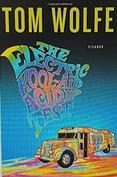
Peoples Temple commands more publications than any other cult.
